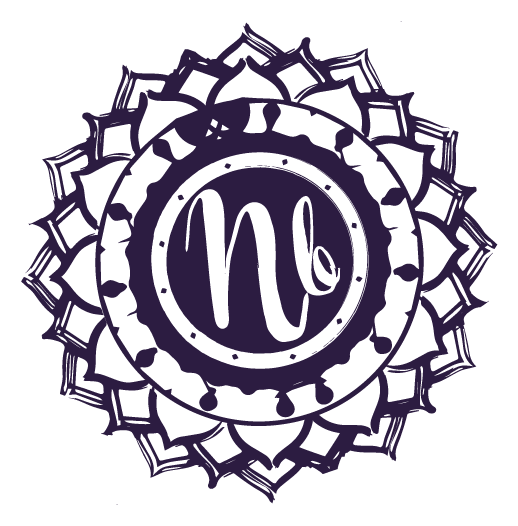
16 Oct lifestyle guide for breast cancer prevention
As a passionate supporter of women’s health, coupled with the mission to empower women with information to become their own greatest health advocate – I knew I wanted to offer something special this month. I wanted to create a guide, a roadmap, to empower women regarding breast cancer prevention. I did not take this task lightly. Breast cancer is a personal and emotional topic for everyone. And although breast cancer cannot be absolutely prevented, there are many known lifestyle practices that we can incorporate to reduce our risk. We also know that combining preventive practices has a powerful preventive effect, especially over the long term. That is why I wanted to provide women, of all ages, information on how to support their bodies with these preventive strategies.
prevention is the cure
Prevention is a comfortable home for me. I have worked in the preventive health space for over a decade. I describe it as that place on a health continuum between optimal health and disease or diagnosis. Most of us live our day to day lives in this space. The beautiful thing about prevention, is this is where we can make the biggest difference. There is so much you can do to support both your future health, and how you feel each day. Even small changes can make a big impact. Especially in the long run.
taking back your power
Reducing the risk of breast cancer is top of mind for so many women. And for good reason. The American Cancer Society states that 1 in 8 women will develop breast cancer in their lifetime1. And that every 3 minutes a woman in the United States is diagnosed with breast cancer1. That means it will touch all of us. Either directly or a close friend, neighbor, sister, cousin, mother, or daughter. That is overwhelming. And terrifying.
But we can’t sit back and focus on the negative. A necessary part of empowerment is to reveal the alternative. The potential. The opportunity for women to work to make our bodies as undesirable of a home for cancer as possible. That is a super power.
We know that approximately 5-10% of all cancer is genetic1. However, that leaves 90-95% of cancers to be influenced by lifestyle & environmental factors1. There are many things we can do to begin to eliminate or reduce many of those potential lifestyle & environmental risks.
So let’s get to it, super women.
lifestyle guide for breast cancer prevention
eat more plants.
Whenever possible. For everyone. Eating more whole, plant-based foods is incredibly healing and protective,2 regardless of what you choose to eat on the side. When I say whole, plant-based foods I am talking fruits (fresh & dried), vegetables (cooked & raw), nuts, seeds, legumes, herbs, and whole (unrefined) grains. Unrefined grains are grains that are in their natural state, like rice, quinoa, amaranth, or steel cut oats. Not products made with these ingredients like breads, pastas, or crackers.
The dietary approach that has been the most widely studied and proven to have the greatest protective benefits is the Mediterranean diet.4 It includes a large quantity of diverse plant-based foods, plus moderate meat and dairy, olive oil, fish, and moderate wine.
but why?
We know plants are “good” for us, but just what does adding these foods do inside your body? Plant-based foods are filled with phytonutrients which literally have the power to help to change the environment within the body. They are filled with these amazing plant chemicals like polyphenols and flavonoids that can correct or block certain pathways. This includes inflammation, supporting the immune system, protecting DNA, supporting proper hormonal metabolism, and even helping healthy cell apoptosis.3 Apoptosis is when a cell is damaged and therefore is destroyed and dies. That is what we want. Cells that are no longer healthy to be destroyed, rather than grow and multiply. Thank you, plants!
meat-eaters, i’m talking to you
It’s important to understand, you do not need to be vegetarian or vegan to protect your body from cancer. However, when you eat meat, it’s important to be aware of simple tips that will both support your overall health and reduce your risk. Here are a few guidelines to follow:
- Be mindful of your meat sources. Choose options that are pasture-raised, grass-fed, or wild-caught. If you eat meat in a restaurant, there is a very good chance that it’s conventionally raised = highly inflammatory to your body.
- I know pastured, grass-fed, and wild meat sources are much more expensive. There is a good reason why it costs more. Simply put, it should actually be more shocking why it’s so inexpensive to purchase conventional meats. There is a reason it’s substantially more affordable, and it costs you in your personal health rather than your wallet. So, I suggest eating smaller meat portion sizes with meals and evaluate reducing the number of times you eat meat per day/week. Meatless meals can be rounded out with plant-based protein sources such as beans, legumes, nuts, seeds and even organic, whole food soy such as tofu or tempeh. (Studies suggest that organic soy consumption has a protective effect in postmenopausal women and protective in cancer reoccurrence.5,6,7)
- When grilling, roasting, or frying meat, try to use lower temperatures,8 when possible. For example, cooking scrambled eggs on low may take longer, but it is better than cooking on medium/medium high. That is because of AGE’s, or advanced glycation end products that are created during the cooking process. Also, be sure to use a marinade and soak for at least 20 minutes before cooking. For example, good marinade sources include lemon juice, vinegar, garlic, and spices. The marinade helps protect the meat and reduce the production of AGEs. These practices will help to make your meal less inflammatory to your body.
keep blood sugar balanced
Overnight Fasting.
Our bodies are meant to have periods where we rest and repair the system. One of the most important opportunities for repair is at night during our sleep. To allow your body to focus on its nightly duties, it’s much easier when there isn’t food to digest, assimilate, and absorb. A night-time fast of 12-16 hours is beneficial9 to support your body’s rest & repair functions plus it helps to keep your blood sugar more stable the next day. For example, finish dinner by 6:30pm and then you are ready to have breakfast the next morning between 6:30-7:30am.
Reduce refined carbohydrates.
I’m not just talking about cakes, cookies, and donuts. These foods are always the poster children for refined carbs. In my opinion, we’ve tagged the wrong foods to take the fall. Likely because we feel better when we think, “well, I don’t eat that stuff, so I’m ok.” The only way we will make headway is if we are honest, right?
Refined carbohydrates are any grain that is processed. And in the processing, a lot of the good stuff is removed. Leaving behind a gasoline-like fuel source for our body. It burns it right up, spikes our blood sugar, and has very little nutritional benefit – leaving us hungry an hour or two later. And it’s the foods we all love: Pastas, breads, crackers, tortillas, pretzels, chips, breakfast cereals, bagels, etc. Even the gluten free versions. Still refined.
At a minimum, be aware and see how these foods feel in your body. Also, think about what you can add (nuts, fruit, hummus, etc.) to a snack or meal so you feel full and satisfied. They may never go away entirely, and that’s ok. Just try to reduce where you can.
get your exercise on
Several studies indicate consistent exercise influences breast cancer prevention. Exercise has been shown to decrease inflammation, decrease insulin resistance (regulate blood sugar), and to increase immunity.10 The recommendation is 30 minutes a day, at least 5 days per week. For risk reduction, high intensity bouts have shown to be more protective.11 So, mix it up! Each month, as women, our energy changes according to the phase of our menstrual cycle. During the follicular and ovulation phases (first half of cycle) we are more energetic, social, and ready for a high intensity activity. However, during our luteal or menstrual phases, listen to your body when its craving to slow down. Choose a walk or yin yoga instead. In the end, it’s all exercise and protective for our bodies.
the stress connection
Stress is inescapable. The goal isn’t to live a life absent of stress, but to better manage the stress you encounter. Constant, chronic stress will lead to decreased immunity and increased inflammation. These bodily changes can contribute to an environment where cancer can survive. We want the opposite, right? We want to create an environment that cancer hates. Although we can’t change stress, we can change our response. Change our relationship with the stress.12 Different tools work for different people. Regardless of the tool, they all require practice and should become part of a routine. This could be an entire book on its own, so I won’t do it justice here. However, here are a few broad areas that can support improving your relationship & response to stress:
- Breathing practices. Here is a simple example of breath work by Dr. Andrew Weil, the 4-7-8 breath.
- Meditation practice. Click here for a basic introduction.
- Yoga. Connecting with the body, the breath, and the present moment are fundamental to a yoga practice. There are more life lessons than I can count interwoven into yoga.
- Mindfulness practices. Most people spend their time regretting the past or worried about the future. These regrets and worries take and immense toll. Establish practices to bring you into the present moment. Appreciating and experiencing exactly where you are, can be healing and powerful.
- Gratitude practice. Mindset is everything. Are you a glass is half empty or half full kinda woman? Our reoccurring thoughts and patterns have a large effect on us and our health. Therefore, starting and maintaining a gratitude practice creates new patterns, steering your thoughts in a more positive direction.
what you need to know about alcohol
We all love a glass of wine, I know. The data indicates that 1 to 2 drinks per day increase risks of breast cancer moderately (3-10%). Greater than 2 drinks per day, risk increases more significantly.13
As a result, if you do enjoy the occasional glasses of wine, be sure to balance with consistently eating foods with folate to support reducing your risk.14 Examples of folate containing foods include peas (black eyed, green), greens (spinach, romaine lettuce, mustard), cruciferous veggies , avocado, and kidney beans to name a few.
and tobacco use
Smoking tobacco oxidizes estrogen in the body, making it less stable. In addition, smoking changes the detoxification enzymes (which are needed to break down estrogens) in the body. Therefore, when estrogens are broken down in a tobacco smoker, they are broken down into the most carcinogenic form of estrogen metabolite.15 So, for breast cancer prevention, it is clear there is no safe level of tobacco smoke. It is also important to support your detoxification pathways to get those dangerous forms of estrogen out of your body as efficiently as possible. For some detoxification guidelines, click here.
final thoughts
We have covered a lot of ground. Prevention isn’t about changing everything all at once. Find one area to focus on now, and then add on when you’re ready. It’s a building journey, a progression.
With that being said, just one of the practices above will make a difference in reducing risk over time. Combining 2 or 3 of the practices above, has many combined benefits. Meaning 1+1=3. We are super women and we have massive control over changing the environment in our bodies. And I think that’s pretty amazing.



